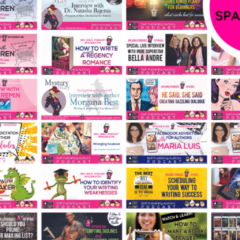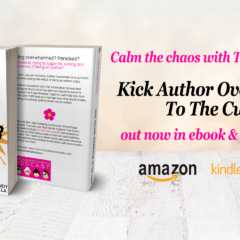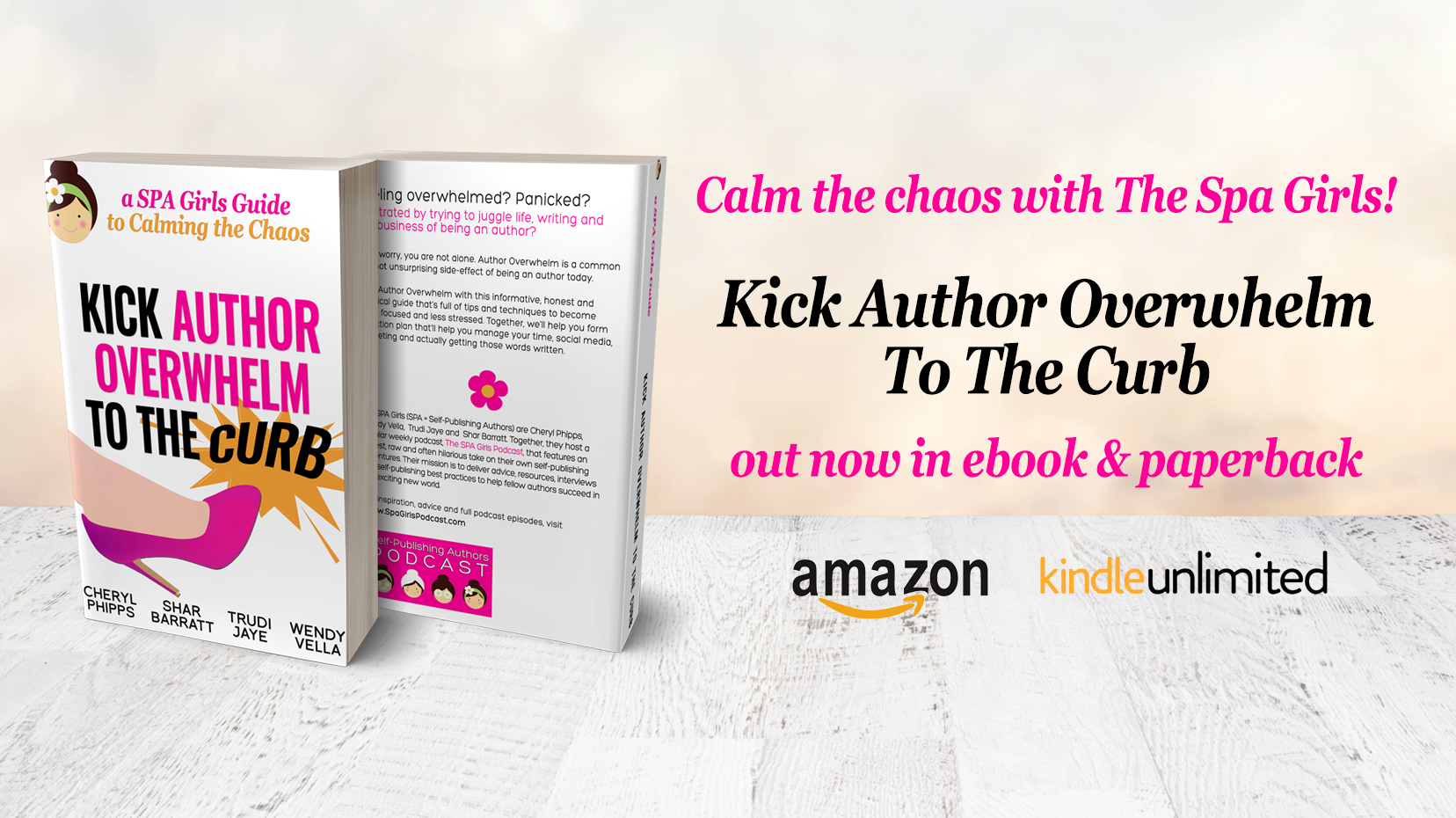SPA Girls Podcast – EP165 – He Said, She Said – Creating Dazzling Dialogue
Podcast: Play in new window | Download
Subscribe: RSS

Love or hate it, dialogue is an essential element to fiction writing.
Done well, dialogue can be very powerful. We know and understand the subtext of dialogue without having to be told, and writers can use this to create amazing scenes and tense moments.
Done badly, however, dialogue can kick your readers out of the scene, make them frustrated and ultimately stop reading.
So how do you make sure your dialogue sings instead of stinks? Easy peasy! Just listen to this episode… 🙂
Today in the SPA we go through what dialogue is, how to use it to your best advantage, we give you some dialogue techniques, talk about ways you can use dialogue to amp up your scene, and work through some of the do’s and don’t’s for creating dialogue that dances on the rooftops!
Show Notes:
Basics of Said/Exclaimed etc
– Dialogue isn’t just filler. It has to work hard. It epitomises the conflict of the story you’re telling.
– We’re more interested in a story when it comes through via a dialogue than description. It’s more active.
– Said is a word people don’t see when they read, so don’t worry about using it, just not too much!
– It is also good to change things up slightly, you don’t want to sound monotonous,
– While you can use said often, it’s not the same for verbs. “shouted,” “exclaimed,” “laughed,” “snorted,” “demanded”, “insisted,” “screeched,” “screamed,” ” maintained” etc.
An example of overkill:
“I think that’s your worst look yet,” Jessie said sighing.
“Surely not, I look seriously hot,” Melanie pouted.
“It’s the pink scarf, with the pink sunglasses, and don’t get me started on the pink hair,” Jessie maintained.
“You’re jealous,” Melanie declared.
– Don’t overuse words alongside said either, just because you think it’s boring. Words like grimly, or hotly etc. Extra words are not needed and clutter dialogue.
– If there are only two people in the scene, you shouldn’t need too many “he said/she said” moments.
– A quote followed by an action will always indicate who’s talking.
– When we are face to face, we get visual clues from body language as well as the words being spoken. You can use that to help indicate what the person is feeling without having to say:
“I think we should go home,” he said angrily.
“I think we should go home,” he said, slamming his fist into the kitchen table.
“I think we should go home.” His eyes filled with tears and he turned away.
“I think we should go home.” She smiled radiantly and held up her engagement ring to catch the light.
– Good to have those books – Negative and positive emotion thesaurus etc. Body language by Barbara and Alan Pease, and the language of love books.
– people’s eyes are naturally drawn to white space in a book. In a non-fiction book you can sort this out by having loads of headings and sub headings. In a fiction book, this is the dialogue.
Dialogue is the same as a scene – if it’s not relevant, cut it!
– You need to know what each character wants, and that needs to come out in the dialogue. (Think of Katniss in the Hunger Games. As soon as her sister’s name is called out – “I volunteer as tribute.” No more powerful words. We know she’s basically volunteering to die for the sake of her sister. She would do anything for her sister, and she shows it through those small words.)
– know the conflict and amp it up. Characters can’t just leave the scene, they have to fight against the conflict or there is no story.
– Remember don’t let the dialogue ramble, sometimes you just need to sum up the situation with a paragraph or two. As an article by Jericho Writers (see links below) says “Get in late and out early. Don’t bother with small talk. Decide the point of each interaction, begin with it as late as possible, ending as soon as your point is made.”
– Dialogue can give away a lot about where someone comes from, and the kind of person they are. “So where did you learn to cook like that?” “I did three years in an International Culinary School in Paris.”
– Be careful about overloading dialogue with jargon, or dialogue specific to a country. “Dinna fash lassie!” “Sweet as bro.”
– It’s vital that dialogue flows, or you will lose the readers attention
Famous lines of dialogue, and why they’re so good:
“ET phone home.” (It sums up what ET is fighting for the whole movie. He’s desperate to get home the whole movie.”
“You want the truth? You can’t handle the Truth!” It was the snapping point for the character. He was desperate to tell them what he’d done, he wasn’t ashamed of it, and the lawyer (Tom Cruise) just had to goad him into it.
“Frankly my dear, I don’t give a damn.” Rhett’s final words to Scarlett.
“Hasta la Vista, Baby.”
“I’ll be back.”
“It is a truth universally acknowledged, that a single man in possession of a good fortune, must be in want of a wife.”
“We’ll always have Paris.”
“In vain have I struggled. It will not do. My feelings will not be repressed. You must allow me to tell you how ardently I admire and love you.”
Dialogue as descriptor
– If you have to explain how someone is feeling as they’re speaking you’re not doing a good job with your dialogue, or creating the scene or picture in the readers head. “Never say you’re actually doing it,” Sarah said frowning. “I am, and you just wait and see it will work out,” Pete said snorting.
– Remember to show don’t tell in some situations. If you have to say he said angrily, it looses its punch, and suggests the reader can’t work it out for themselves what’s going on, which in turn says you haven’t created the scene well.
– If the dialogue is good, it can include action also. “You’re an idiot, put down that knife.”
– Really good dialogue will stand on it’s own.
– Sometimes what characters say tells us a lot about them, and their backstory. For example, if they have no wish to discuss their past, perhaps they have issues? “Will you come with me to the Christmas Parade, Jake?” “I don’t do Christmas.” We have to wonder why?
– As with any scene, know what the point of the dialogue is. Know what is going on in the heads of the characters and make sure that comes across in what they’re saying. Don’t be lazy and just tell. Think of ways to show how they’re feeling through the dialogue.
Tricky tips for Creating Great Dialogue
– Clever dialogue is oblique (see anything written by Aaron Sorkin or the Gilmore Girls rapid fire dialogue) per Jericho Writers – “So direct dialogue is where person X says something or asks a question, and person Y answers in the most logical, direct way.
We hate that! As readers, we hate it.
Oblique dialogue is where people never quite answer each other in a straight way. Where a question doesn’t get a straightforward response. Where random connections are made. Where we never quite know where things are going.
As readers, we love that. It’s dialogue to die for.
…Want to achieve the same effect? Just keep your dialogue not quite joined up. People should drop in random things, go off at tangents, talk in non-sequiturs, respond to an emotional implication not the thing that’s directly on the page – or anything. Just keep it broken. Keep it exciting!…”
– The dialogue should elicit emotion, in the same way your wider story should. A scene in a kitchen with two people making tea and sitting down to drink it, and discussing the weather – shouldn’t be about that at all. If it is, it’s the most boring scene in the world. There should be undercurrents of tension. What is it that these two characters are fighting against? Has one of them just found out the other is cheating with her husband? Does one of them owe the other money, but can’t repay it? Have their kids been fighting? Expelled for stealing?
– If you want to amp up the dialogue, amp up the scene. A couple having a fight? What about a couple having a fight while on a boat in shark infested waters? A girl finally deciding to tell her crush how she feels? What about if she did it while he was out on a date with another girl?
– Different kinds of dialogue for different genres. Fast and snappy in thrillers, more thoughtful and romantic in romance.
– Try to become your characters as you write them. Slip into their heads and write what they would say.
– Say it aloud, to see how it sounds
– Remember the way we speak in person is not the same as sparkling dialogue on a page
– Some writers just write the dialogue in a scene first, and add in the descriptors later.
HELPFUL LINKS:
www.thecreativepenn.com/2012/10/04/dialogue-mistakes/
Jericho Writers How To Write Dialogue In Fiction: https://jerichowriters.com/writing-dialogue/
Book: How To Write Dazzling Dialogue by James Scott Bell
https://www.amazon.com/dp/B00KN0JEYA/
Episodes 100 – 200 List
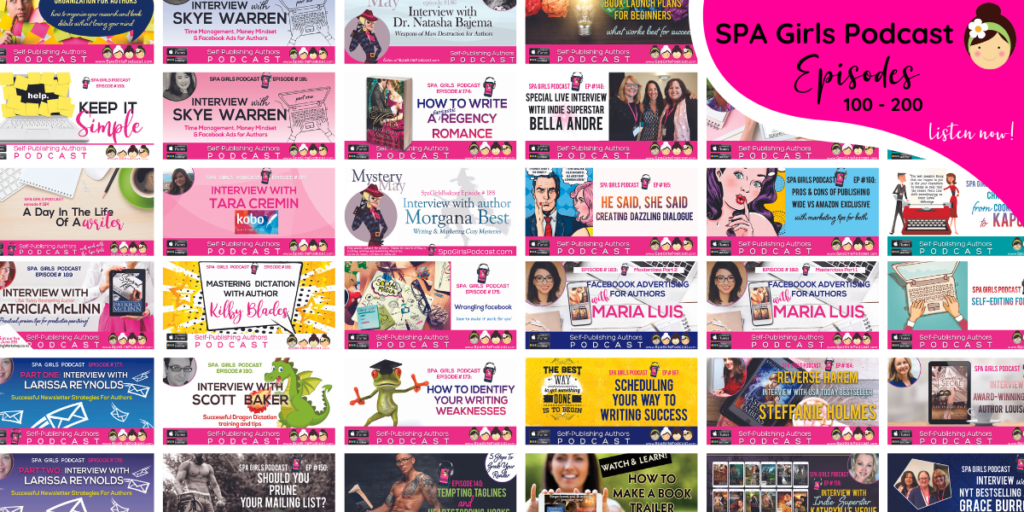
200 What we’ve learned so far…
199 Interview with Adam Croft – Mindset and Marketing
198 Find Your Sparkle – with Julie Schooler
197 Hack Your Muse – with Kelly McClymer
196 Public Speaking For Authors – with Alena Van Arendonk
195 The Magic Pill – with Laura Van Arendonk-Baugh
194 A Day In The Life Of A Writer
193 Keep It Simple
192 Interview with Skye Warren: Money Mindset and Facebook Ads
For Authors (Part Two)
191 Interview with Skye Warren: Time Management & Advertising
For Authors (Part One)
190 Dragon Wrangling with Scott Baker: secrets for
Successful dictation
189 Interview with Patricia McLinn: Writing by the seat of
Your pants
188 Interview with Morgana Best: Writing & Marketing
Cozy Mysteries
187 Interview with Geoff Symon: Wounds & Crime Scenes
186 Interview with Natasha Bajema, WMD for Authors
185 The Writer’s Detective with Adam Richardson
183 Facebook Advertising with Maria Luis ~ Part Two
182 Facebook Advertising with Maria Luis ~ Part One
181 Learn dictation with Kilby Blades
180 Interview with Brian Meeks, Mastering Book Descriptions
179 Interview with Tara Cremin, Kobo Writing Life
178 Interview with Larissa Reynolds – Newsletters Part Two
177 Interview with Larissa Reynolds – Newsletters Part One
175 Wrangling Facebook: How To Make It Work For You
174 How To Write A Regency Romance
173 How Do You Identify Your Writing Weaknesses?
172 Interview With Dan Wood, D2D
171 Interview With Serenity Woods
169 5 Goals You Need To Make In 2019
168 Jumpstart Your 2019 Marketing with 31 Quick To Dos for Jan.
167 Scheduling For Writing Success
166 Our 2018 Roundup
165 He Said, She Said: Creating Dazzling Dialogue
164 Interview with Steffanie Holmes: Reverse Harem
163 Interview with YA author Kelly St Clare
160 Amazon Excl v Wide – things to consider and how to market
159 Interview With Kathryn LeVeque
158 Some Like It Hot – Or Not. Heat Levels In Romance
157 Interview With Louisa George
156 The Kindness Factor: Helping You Achieve More and Stress Less
155 Editing
153 Characters: From Cookie Cutter to Kapow
152 Interview with Tina Dietz: Audiobooks
151 Interview with Grace Burrowes
150 Should You Prune Your Mailing List?
149 RWNZ18 Interview with Damon Suede & Geoff Symon
148 Interview with indie superstar, Bella Andre
147 Top Ten Traits for Success
146 Write Better Faster with Becca Syme
145 Newsletter Ninja Tammi LaBrecque
144 Looking After Your Creative Health
143 Interview with Carlyn Robertson from Bookbub
142 Personal Branding For Authors with Lauren Clemett
141 Ten Free Online Tools For Authors
140 Tempting Taglines & Heartstopping Hooks
139 Findaway Voices with Kelly Lytle
138 Get Your Writing Mojo Back
137 Interview with Toni Kenyon: facebook live & serials
136 Dealing with misinformation and change in Sp-ing
134 Interview with Kevin Tumlinson, Draft2Digital
133 Interview with Sara Rosett
132 Organization For Authors – how to keep track of your
research and book details without losing your mind
131 Interview with Ricardo Fayet of Reedsy
130 Critical Care: Leveraging feedback for success
129 Brand You
128 SAS Special: Interview with Johnny B. Truant & Sean Platt
127 Industry Insiders with Damon J. Courtney of Bookfunnel
& Christine Monroe of Kobo
126 SAS Debrief with Jami Albright
125 SAS Special: Interview with Michelle Spiva
124 SAS Special : Interview With Michael Anderle
123 Sports Psychology for Authors – Interview With Nate Vella
122 Using Sub Plots To Amp Up Your Writing
121 Interview with Scott King: Outlining Your Novel
120 Pen-names Pros, Cons and Possibilities
119 Reader Engagement with Nalini Singh
118 Writing the Small Town Setting
117 Handling Negativity and Naysayers
116 Tough Mindset Questions For 2018
115 Interview With Nicola Davidson: Sex and Sensibility
114 Tropealicious
112 Interview With Honoree Corder & Ben Hale: Write Like A Boss
111 Ten Health Hacks For Writers
110 Interview with Kathryn Burnett: Your Writing Audit For Future Success
109 Interview with Melissa Storm: What Readers Want
108 Interview With Zoe Dawson: Writing Across Genres
107 Interview With Dave Chesson, The Keyword King
106 Pros and Cons of Kindle Unlimited
105 Why YOU should do Nanowrimo
104 Ten Truths For New Self Publishers
103 Find 30 Minutes A Day EXTRA!
102 Your Christmas Presence: Maximizing the Holiday Season for Authors
101 The Writing Life: Interview with Katie Cross
100 100 Episodes! Retrospective with funny moments; changing AO title
Regency Underwear
Young women of the Regency era were luckier than their Georgian and Victorian sisters who lived with the constriction of boned corsets to enhance their unnaturally small waists, and correct posture. The ‘natural Female form’ influenced fashionistas in the Regency era, much to the relief (I should imagine) of the women who lived in this time.
Ancient Greece was in vogue, and as such, the minimalist approach was in. Column dresses with a delicate ruffle, rather than being swamped in yards of fabric, and thick uncomfortable lace. Waists were high, (just under the bust) hoops were gone, and petticoats reduced. Skirts fell in a long straight line to the floor.
Of course it was still important to wear a support garment, however the change in style dictated a shorter corset. Gone was the heaving bosom style, once so popular that went from bust to hip, hooked at the front and laced at the back, with shoulder straps to help keep the sleeves of a dress in place. In it’s place was a corset that could be worn separately, and in some cases used as the dress itself. It was worn over a chemise. Stoc
kings were knee or thigh high, and held in place with garters. In earlier years, petticoats and panniers would be worn over the top, but this changed in the Regency era, and the petticoats were down to just one layer, and only if necessary.
Chemise – this was cotton or linen (easily washed unlike the dresses). Worn next to the skin. Usually short sleeved, with a loose drawstring neck.

Stays (corset)– worn over the top of the chemise for cleanliness. Without this a woman could look flat-chested, as often the gowns had little tailoring to enhance the figure. Could be fastened front or back.

Petticoat – These were often hemmed with lace, so if seen, along with a well turned out ankle, the lace was on show.

Stockings – Tied at the thigh or knee and made from cotton, silk, or wool. Held in place with garters that tied, buckled, or hooked.


Drawers/pantaloons – Until 1806 women wore no drawers! (scandalous) They came to just below the knee, but were not worn by everyone and often the wearer was thought fast!


Men’s underwear
Men in the Regency era had their own selection of underwear. The undershirt was a relatively new thing, as were men’s drawers. Before this, men simply tucked the long tails of their shirts into their pants. When drawers arrived they were like shorts with a drawstring and flaps that buttoned at the front, and tied below the knee. Often men still went commando rather than having this cumbersome garment under their trousers. Wool or cotton stockings completed the men’s wardrobe, and sometimes he would wear cotton stockings under his silk ones to reduce the appearance of hair.


Learn more about Wendy’s historical romances here
Author Overwhelm
Feeling overwhelmed? Panicked?
Frustrated by trying to juggle life, writing and the business of being an author?
Don’t worry, you are not alone. Author Overwhelm is a common and not unsurprising side-effect of being an author today. Beat Author Overwhelm with this informative, honest and practical guide that’s full of tips and techniques to become more focused and less stressed. Together, we’ll help you form an action plan that’ll help you manage your time, social media, marketing and actually getting those words written.
A SPA Girls Guide: Kick Author Overwhelm To The Curb is out now!
Available in ebook and paperback on Amazon and Kindle Unlimited!
Read an excerpt below …
What Are The Consequences of Author Overwhelm?
[OR]
Holy Cow, I’m Losing My Mind!
Before we go any further, we want to talk about why author overwhelm can be such a problem. Aside from the fact that it can make you feel awful, both inside your head and physically, there are a few very serious consequences…
Author burnout
Author burnout is actually pretty common—we just don’t talk about it all that much. While you’re trying to make it, you’re generally doing a lot of work for free, pushing yourself to spend time at the keyboard while living with hopes and dreams that it’s all going to work out. Sometimes it happens as you expect, sometimes it doesn’t. But when everything seems too much, you can’t focus and writing just seems way too hard. That’s when you’re most likely to burn out.
Writer’s block
This is when you’re staring at the screen and nothing is happening. You’ve lost your creative mojo, and all you can write is…nothing! Most often, this is when you’re feeling panicky, unbalanced or on edge, and is a direct result of author overwhelm.
Depression and anxiety
If you can’t focus, you won’t be achieving what you want to achieve, and everything can seem to be slipping away from you…that’s when the depression and anxiety can kick in. It’s a sliding scale, but this can lead to some serious issues for your wellbeing, and we really don’t want you to go there if you can help it.
Giving up entirely
Occasionally writers whisper to each other about a friend or acquaintance who actually gave up writing. Perhaps they moved on and decided to try something else instead. For some people, this might be the best decision they could have made. But for other people, it’s not because they didn’t have the talent or the will to succeed—they just became too overwhelmed to continue on.
We’re here to stop that happening to you!
FROM THE SPA GIRLS
Everyone experiences author overwhelm, but different problems cause each of us to turn into jittery balls of Jell-O. We’re all unique, right? So it makes sense that our pain points are unique to each of us as well.
Wendy’s story
I have a few general neuroses that hit me all the time. The main one is “OMG no one will read it!” closely followed by “She’s way more successful than me, why can’t I be that good?” Marketing is enough to make me go hide in the bathroom, and I’m always having thoughts like, “How can I hope to get my books noticed when there is soooo much competition?” and “I suck at this.”
Some days it’s more about my mindset. I tell myself, “It’s just toooo hard.” (Usually with the bed covers over my head.) And I also have a pretty strong competitive streak, so the thought “Why is that book winning all those competitions and not me?” often floats across my mind. (On the heels of that thought comes “Perhaps if you entered it would help?”)
I could go on, but as I want you to take me seriously, I think it best to stop here.
Cheryl’s story
The first thing is to realize that whatever you’re feeling, it’s okay. There is no right or wrong way to avoid author overwhelm, there’s no right or wrong way to become an author, and there’s no right or wrong way to deal with the results of being overwhelmed. Everyone experiences it, and it affects everyone differently. What we’re giving here are some examples of the ways we’ve dealt with it, so that you can find ways to make it work for you.
I don’t like to muck around with things. I get frustrated by inaction. Which all sounds good, until you find that you can’t move forward until you take the time from writing the story to learn. To be better at your craft, and to achieve something you will be proud of.
All the hard work and the long hours make sense when you see your book on a screen or in your hand. Believe this – it’s worth it.
Shar’s story
When I look at my own writing and publishing stacked up against the other SPA Girls I get that hot, prickly, uncomfortable feeling—equal parts inspiration, embarrassment and shame.
They’re the inspirational part. Heck, they’re actually producing and publishing great stories, while dealing with busy, complicated lives. The embarrassment and shame is that while I can talk a good game, I’m so far behind them on the publishing front, it’s not funny. Or inspirational. We (I) joke that I’m like the weak antelope at the back of the herd, running behind them frantically trying to keep up.
I’ve always been hampered by the twin Achilles heels of perfectionism and procrastination.
And you know what? That’s okay.
Because we’re all human and we all have different talents. My author overwhelm comes very much from internal, negative self-talk and thoughts. I’m not fast enough, not good enough, OMG what if someone I know reads this and hates it—or worse, what if someone I know reads this and actually likes it?
I had wrapped up my self-identity in ‘being a writer’, and after continually ‘failing’ at producing and publishing work for so long, I wasn’t able to see the bigger picture: that I’m producing successfully in other fields, and all the self-flagellation in the world ain’t gonna get this train rolling. It hasn’t worked for the past *cough* forty-something years, and it ain’t gonna work in the future.
Time to change the record.
I’ve spent many years working on this aspect of myself and will share in this book what’s really worked for me.
We’ve put together a whole heap of (hopefully) positive encouragement, useful advice and resources in this book. For me, I’d like to give you, gentle reader, a big hug and say…
Welcome to being a writer.
You can do this. You are not alone.
Trudi’s story
I’m the ambitious one in the group.
And I don’t mean to say that the other SPA Girls don’t have goals and haven’t achieved a whole lot, because they have, surpassing me by light years in many areas. What I mean is that I have high expectations of myself and what I can achieve. This is sometimes the very thing that hampers me, and causes me to stumble.
I want to do everything, right now. Yesterday, if possible. I take on too much, and I’m impatient to have it all done. Oh, and I have a terrible time saying no to other people. Did I mention I faff about, doing a little bit of a lot of things and never finishing anything? Oh, and then there’s the fact I have to learn about three new programs to update myself to the latest technology in the industry. Oh and…
Well, anyway, you get the idea.
There’s this big to-do list sitting on my desk, with about fifty-plus things on it. Every one of them is important and I know I must get them all completed if I’m going to make it in self-publishing land. I’ve started a few of them, changed my mind, and started another couple. I’ve dabbled and fussed and thought about it all in great detail. But nothing is finished.
Does this sound familiar?
It’s where I ended up last year after I quit my job and went full time as a writer (mostly—I have a five-year-old daughter who also needs some attention). I knew all the things I had to get done so I could start being a successful self-publisher. But instead of getting to work, I ended up stalled. I had so much to do, I couldn’t do anything at all.
In the end I managed to work through my overwhelm and get back on track. It was simple, hugely effective, and I’ll tell you exactly what I did later in this book.
That’s the kind of advice we’re planning to give you. Simple, effective solutions to get you back in the writer’s seat, pumping out those works of genius.
I hope you come along for the ride!
Buy now on Amazon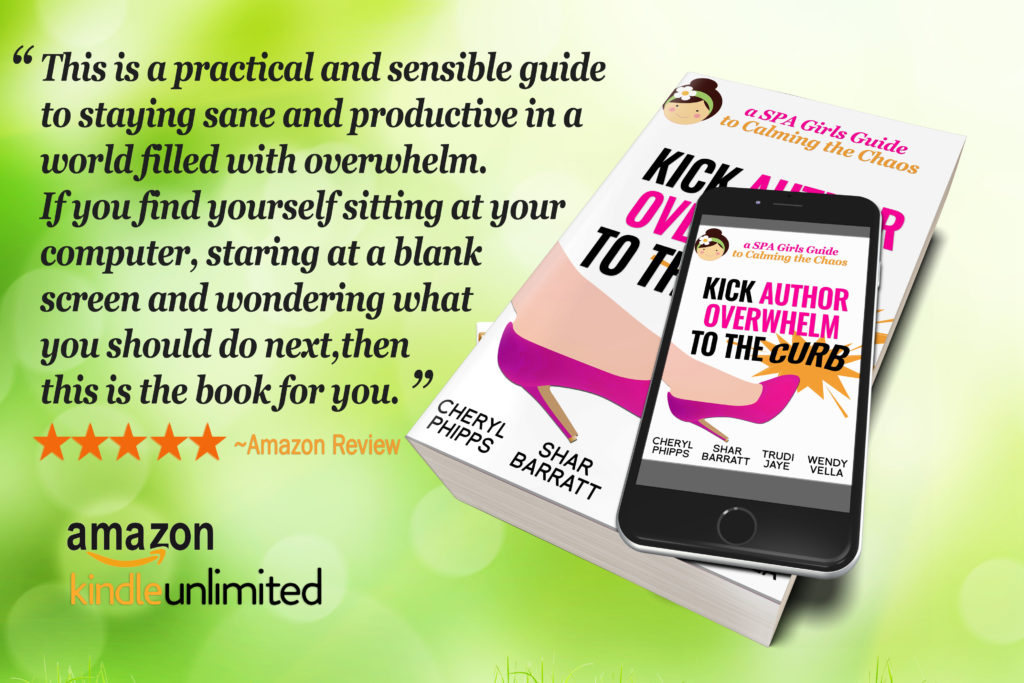
Read on Kindle Unlimited

